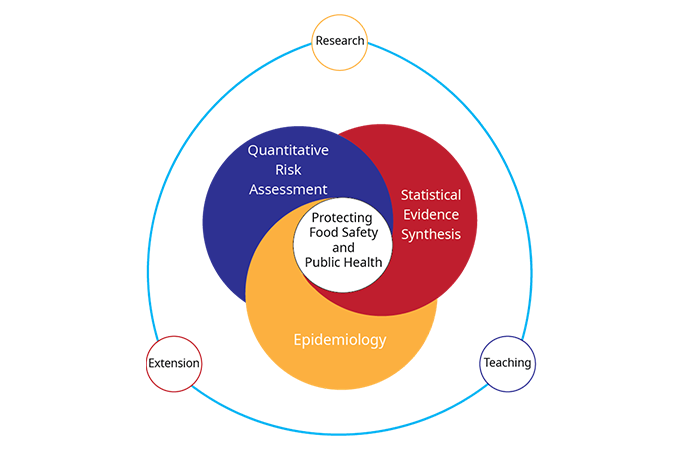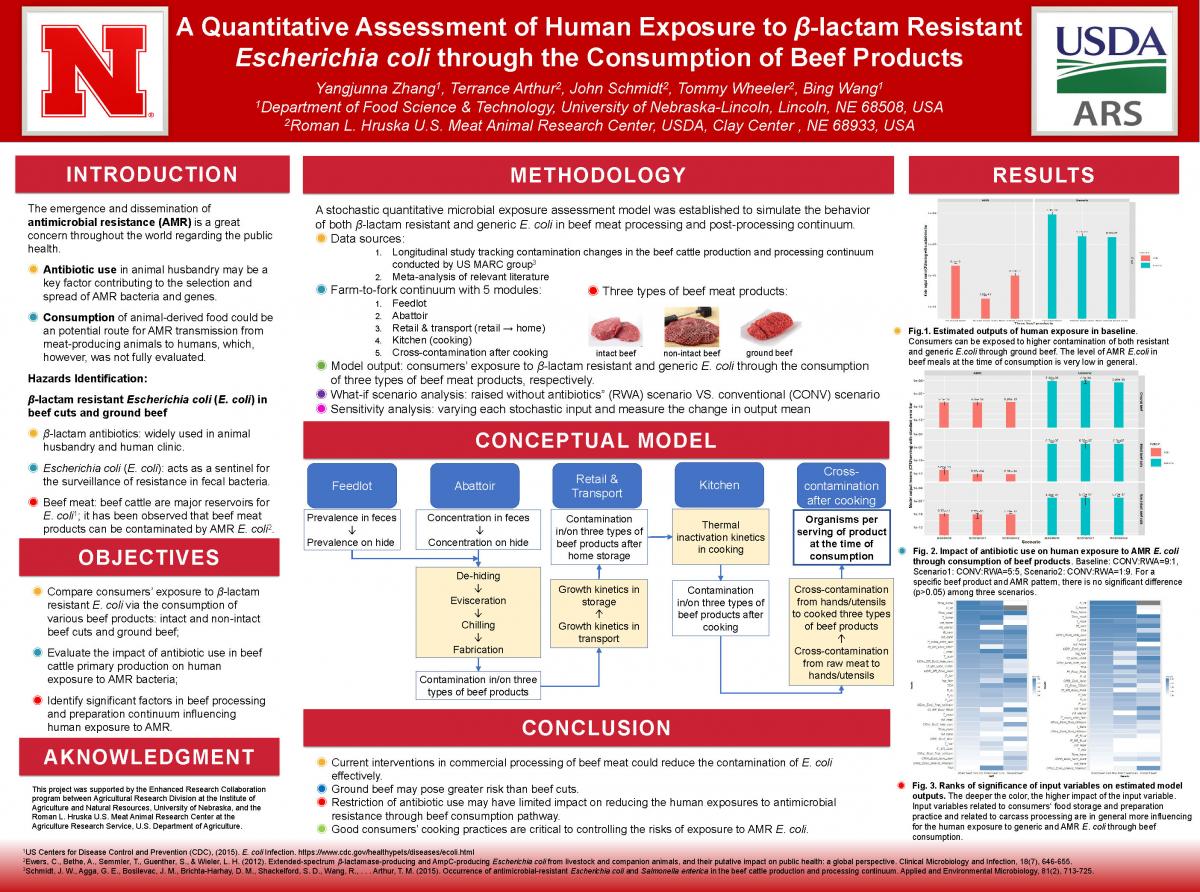Risk Assessment
The research at Wang’s group primarily focuses on quantitative risk assessment of microbial contamination occurring in the food systems. Risk assessment is a systems approach endorsed by the international and national food related authorities, such as Codex Alimentarius and World Trade Organization to set food standards, promote fair international trade and foster the sustainability of food systems. Typically, it uses mathematical models to describe the introduction, transmission and change in the hazardous agents along the food supply chains, being influenced by production and processing conditions. Using risk assessment as a tool, critical control points along the food chain can be identified, processing conditions can be optimized, and intervention strategies can be evaluated. And the ultimate goal of risk assessment is to inform sound decision makings on food safety risk management practices.
The completed and ongoing projects includes risk assessment of Campylobacter in broiler chicken in the US, risk assessment of hepatitis A virus in fresh and frozen raspberry in Chile, and exposure assessment of antibiotic resistant bacteria in beef products.
Systematic Review and Meta-Analysis
Another research direction in Wang’s group is systematic review and meta-analysis. Systematic review is an evidence-synthesis approach, following a pre-determined protocol to collect, appraise the quality of, screen the relevance of documented studies to a particular research question that the review would like to address. Then the relevant data of high quality are combined together using statistical approach, which is referred as meta-analysis. Wang’ research uses the outputs from systematic review and meta-analysis to provide the key inputs for risk assessment model.
The completed and ongoing projects includes systematic review and meta-analysis (SR and MA) of the efficacy of different control measures of Campylobacter along the broiler chicken production chain on farm and at slaughter house, respectively; SR and MA of spore-forming bacteria contamination along fluid milk production to identify the possible contamination sources; SR and MA of the impact of microbial mitigation strategies in beef processing plant on antibiotic resistant bacteria.
Predictive Microbiology
Applying predictive microbiology modelling in food industry is also of great interest in Wang’ group. A project that just started is to develop kinetic survival models for pathogens and spoilage organisms in acidified foods and to quantify the impact of food intrinsic (pH, water activity, presence/absence of preservatives) and extrinsic (holding temperature) factors on the kinetic parameters, such as the holding time needs to wait until the acidified foods are safe to be released to the market. Predictive microbiology can be used for new product development and prioritizing food processing conditions to achieve a particular performance criteria for food safety production.
Source Tracking and Molecular Epidemiology
Wang’s group also uses next-generation sequencing approach for source tracking Salmonella contamination in beef cattle animals to the environmental inches on farm and investigating the transmission of antibiotic resistance genes from livestock animal waste on feedlot, through manure storage and land application to air and soil.
Teaching
Dr. Wang leads a graduate level course of Food Safety Risk Analysis at the Department of Food Science and Technology and co-instruct the Public Health course at the School of Veterinary Medicine and Biomedical Science for the Principle of Epidemiology for DVM students.
Extension
Dr. Wang’s extension activities primarily focus on providing training programs of food safety risk analysis in Latin America and Caribbean region countries. She is currently collaborating with University of Maryland, University of Minnesota, FAO (Food and Agriculture Organization of the United Nations), IICA (Inter-American Institute for Cooperation on Agriculture), and PAHO (Pan American Health Organization) to initiate a food safety risk analysis consortium to facilitate the capacity building of implementing risk analysis in food safety management systems in those countries. More info.
Group
Currently, there are three PhD students and one MS students in Wang’s group.




